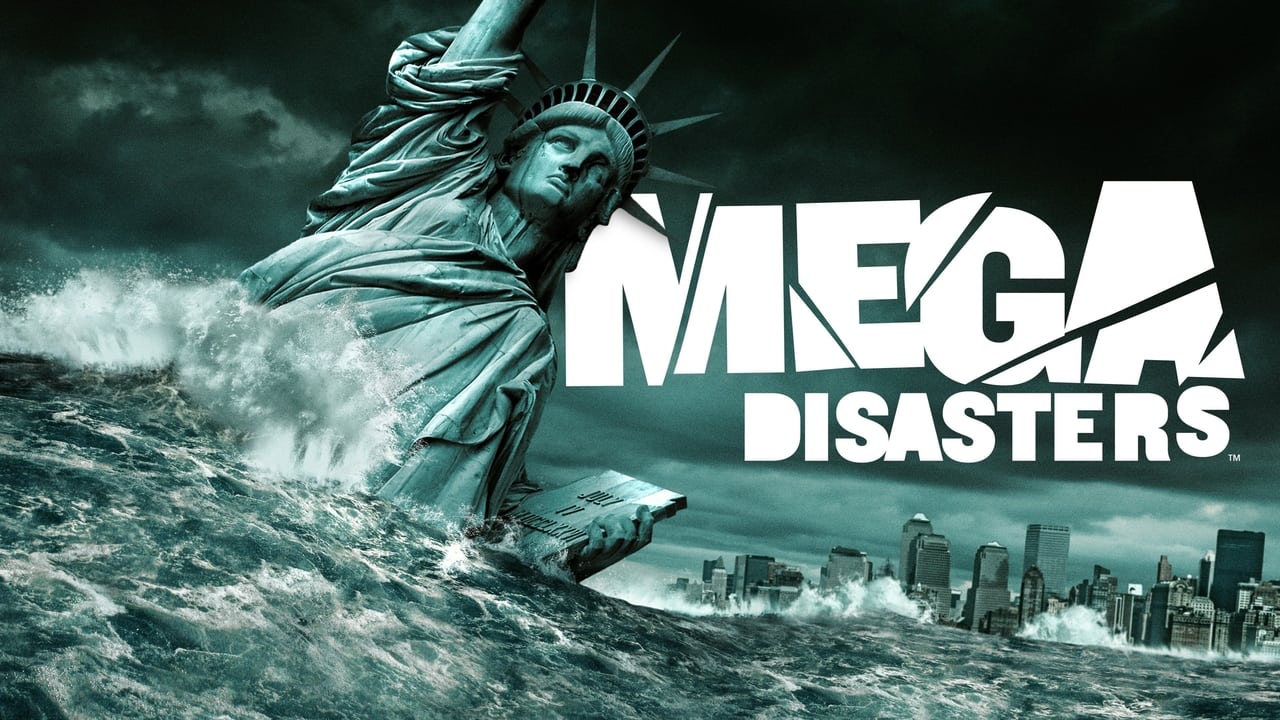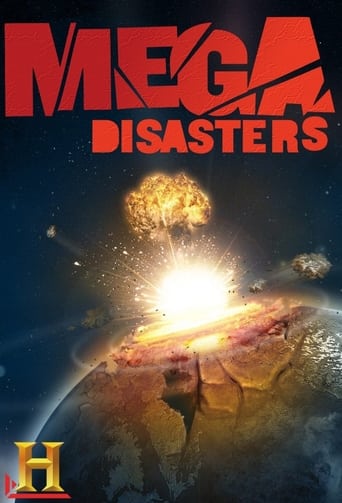Mega Disasters Season 3

Mega Disasters is an American documentary television series that originally aired from May 23, 2006 to July 2008 on The History Channel. Produced by Creative Differences, the program explores potential catastrophic threats to individual cities, countries, and the entire globe. The two "mega-disasters" of the 2004 Indian Ocean tsunami and Hurricane Katrina in 2005 inspired the series and provided a reference point for many of the episodes. Excepting only two shows devoted to man-made disasters, the threats explored can be divided into three general categories: meteorological, geological, and cosmic hazards.
Watch NowWith 30 Day Free Trial!
Mega Disasters
2006

Mega Disasters is an American documentary television series that originally aired from May 23, 2006 to July 2008 on The History Channel. Produced by Creative Differences, the program explores potential catastrophic threats to individual cities, countries, and the entire globe. The two "mega-disasters" of the 2004 Indian Ocean tsunami and Hurricane Katrina in 2005 inspired the series and provided a reference point for many of the episodes. Excepting only two shows devoted to man-made disasters, the threats explored can be divided into three general categories: meteorological, geological, and cosmic hazards.
Watch Trailer
Mega Disasters Season 3 Full Episode Guide
Could the island nation of Great Britain have once been connected to Europe by land? Listen to a new theory and evidence which suggests that the English Channel was created by one of the largest floods ever. Did a violent storm re-shape the European continent? Might this happen again? Dramatic 3-D animations recreate what this prehistoric mega storm may have looked like and unravel the mystery behind the creation of England.
Chemistry has changed our way of life. From the gasoline in our cars, to the quality of water we drink, to the furniture we sit on. But with modern industry come hazards and risk, including potentially the explosive release of a dangerous chemical. Could a Toxic Cloud be the next mega disaster?
The Thera volcanic eruption nearly 4000 years ago at the site of what is now Santorini. Greece, and the resulting tsunami are recalled. Also: speculation regarding another possible eruption.
Since commercial aviation truly began in the 1930s, the romance of air travel has been marred by the tragedy of crashes. Unless significant changes continue to be made in airport infrastructure, aviation technology, and professional training, any American airport could be the site of the next Mega Disaster.
Anthrax is the most feared of all the biological weapons--spores entering the body through the lungs are lethal. In 2001, a simple letter, sent through the US mail, paralyzed a nation, when anthrax spores were found inside. Experts predict that anthrax released over a populated area would result in unprecedented loss of life--a few pounds of anthrax released under the right conditions could kill hundreds of thousands of people. Will anthrax be used to create a worldwide disaster?
The U.S. Department of Energy and the Nuclear Regulatory Commission plan to transport 77,000 tons of nuclear waste to a permanent storage facility 950 feet below Nevada's Yucca Mountain. If the plan goes through, much of the cargo will travel through Las Vegas, making an accident there a very disturbing possibility. If history has taught us anything, it's that transporting dangerous goods can sometimes have catastrophic results. Take a look at the potential disaster that such a rail accident would have in Las Vegas.
Modern dams are marvels of engineering but after decades of neglect the U.S. infrastructure is in crisis and by 2020, 85% of U.S. dams may be near their breaking point. When the South Fork Dam near Johnstown, Pennsylvania gave way in a storm in 1889, killing 2200 people, it was the worst disaster in U.S. history. Today, with millions of Americans living nearby massive dams, the result of a failure could be catastrophic.
The largest volcanic eruption of the past two million years occurred on the Indonesian island of Sumatra some 75,000 years ago. The impact from the supervolcano Mount Toba decimated the local habitat, but gas, ash and debris from Toba made their way around the planet and formed a shield in the atmosphere that deflected the sun's warming rays. Temperatures plummeted and the planet was thrown into a volcanic winter and may have even pushed the planet into an ice age. 3-D computer animation will recreate the storm and unveil how this one volcano could have brought humanity to the edge of extinction.
Around 65 million years ago, a massive asteroid crashed into Mexico's Yucatan Peninsula. Nearly 75% of all life on earth vanished. But could a single asteroid have been the lone killer? Theories about what happened after the impact have been speculated on by the entire scientific community. Ranging from global warming to lethal worldwide firestorms, ideas have been put forth, but none have been proven. Then in 1995 a new theory claimed that a powerful mega-storm known as a hypercane caused the extinction. The hypercane allegedly reaches 20 miles into the stratosphere and has wind speeds of up to 500 miles per hour. 3-D computer graphics will reveal how this storm could have brought down nearly all life on the planet.
About 8,000 years ago, rain squalls had global oceans surging. The oceans rose above all of the earth. When the flood was over the Mediterranean Sea had claimed a landmass twice the size of Ireland. This prehistoric mega-storm was the greatest natural disaster in human history. 3-D computer animation will recreate what this lethal flood may have looked like.
In 6,000 BC, 8,000 years before the 2004 Indian Ocean tsunami, a paleotsunami whose waves reach taller than the Statue of Liberty allegedly was generated by a landslide from Mount Etna and ravaged the coasts of the Mediterranean Sea, devastating ancient villages and killing untold numbers. A team of scientists pieces together evidence of this megatsunami and reveals the face of this ancient tsunami for the first time. 3-D computer generated animation recreates the massive waves that may have changed the course of history.
Exploring the possibility that a hypercane (a theoretical super hurricane) may have hit Earth billions of years ago and destroyed most of the life on the planet.
Free Trial Channels
Seasons
























